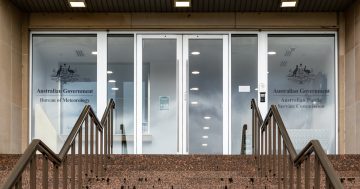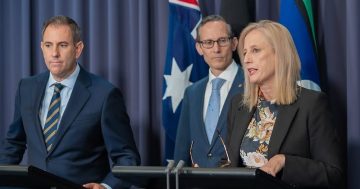
There are now four classifications in the APS in which women are paid more than men. Photo: File.
The gender pay gap in the Australian Public Service is still there, but it’s barely noticeable.
The gap is driven primarily by the different representation of males and females across APS classifications. It is decreasing due to an increasing proportion of women employed at APS 6 and above, while at the same time a decreasing proportion of women are at APS 5 and below.
This change in proportions increases the average female salary, influencing the decline in the gender pay gap figure.
So says the latest data released by the Australian Public Service Commission in its remuneration report.
Each year the commission collects remuneration data from all agencies with employees engaged under the Public Service Act 1999.
This latest report highlights headline remuneration trends based on data collected from APS agencies as at 31 December, 2023, and it shows that for five of the 12 classifications in the service, the difference in median base salaries between men and women was within a range of +/-0.5 per cent.
There are now four classifications in which women are paid more than men in 2023, compared with three categories in 2022.
The difference in overall average remuneration between genders was 4.5 per cent, decreasing from 5.2 per cent in 2022 and 7.3 per cent in 2019.
“On a classification-by-classification basis there were only small differences between male and female average base salaries,” the report states.
“Most differences were less than 1 per cent.
“On a classification-by-classification basis there is a small or no gender pay gap. This suggests that the overall APS gender pay gap is not due to unequal pay for comparable work, but rather the distribution of females and males across the classification structure.”
Between 1 September and 31 December, 2023, employees in 35 APS agencies received a lump-sum realignment payment of between 0.99 per cent and 2.56 per cent of base salary to compensate for scheduled pay increases that were due before the new common pay increase date of 14 March, 2024.
All other components of the service-wide pay offer were paid in 2024 following a successful vote for new enterprise agreements.
“From 2022 to 2023 the number of ongoing non-SES engagements and promotions increased by 41 per cent and 12 per cent respectively,” the report says.
“Newly engaged and promoted employees tend to commence on salaries at or near the bottom of their salary scale.
“This change to employee distribution across salary scales is a likely driver of the lower-weighted non-SES median base salary increase, relative to wage increases in 2023.”
Senior Executive Service remuneration soared in comparison with non-SES increases.
SES employees are hired under individual arrangements negotiated directly with their agency.
“The ability for SES employees to negotiate individual remuneration arrangements, or be offered higher levels of remuneration or a different remuneration package, is likely to be a further driver of the 2.5 per cent SES median base salary increase,” the report says.
“SES base salary movement since 2019 has generally been higher than non-SES movement.
“The year 2020 was an exception due to the suspension of SES wage increases (until June 2021) in response to the COVID-19 pandemic.”
Several factors contributed to the headline SES base salary increase, the report says, with the most notable being the continuing trend to repackage motor vehicle-related allowances in base salaries.
“Consequently, the proportion of SES employees paid a motor vehicle-related allowance decreased from 27.1 per cent in 2022 to 18.9 per cent in 2023,” it states.
“SES total remuneration package and total reward increases were more modest than SES base salary increases.”
The report was compiled from valid data received for 165,882 APS employees, including 3210 SES employees and 162,672 non-SES employees.
Total headcount increased by 16,226 (or 10.8 per cent) compared with December 2022 when it was 149,656.
Headcount is different from Average Staffing Level (ASL) data provided in the Federal Budget papers.
The ASL counts staff for the time they work. A full-time employee is counted as one ASL, while a part-time employee who works three full days a week contributes 0.6 of an ASL.
The ASL averages staffing over an annual period and is not a point-in-time calculation.
APS employment data analysed for this report includes demographic variables including age, gender and work location; classification level of APS employees, from trainee to SES; diversity data; and staff movements including engagements, separations, promotions and transfers between agencies.



















